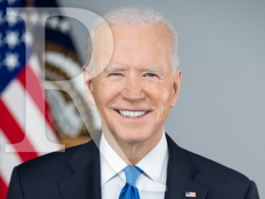32% Say Health Insurance Changed Because of Obamacare
Nearly one-out-of-three voters now say their health insurance coverage has changed because of the new health care law, and most continue to view the law unfavorably.
Forty-three percent (43%) of Likely U.S. Voters have at least a somewhat favorable opinion of the health care law, while 52% regard it unfavorably, according to the latest Rasmussen Reports national telephone survey. This includes 18% who view the law Very Favorably and 38% who have a Very Unfavorable opinion of it. (To see survey question wording, click here.)
This marks a slight improvement from two weeks ago when 41% viewed the law favorably and 56% had an unfavorable opinion of it. Unfavorables hit an all-time high of 58% in mid-November. Favorables fell to a record low of 36% in that same survey.
Thirty-two percent (32%) now say their insurance coverage has changed because of the new law. That’s up from 27% a month ago. Fifty-six percent (56%) say their health insurance has not been affected, but another 12% are not sure.
Nearly 90% of voters have health insurance, and roughly 80% have rated that insurance good or excellent in surveys for years.
Sixteen percent (16%) now say they personally have been helped by the law, up from 12% in December. Twenty-nine percent (29%) say they have been hurt by the law, consistent with regular surveying for several months. Fifty-one percent (51%) say it has had no impact on them.
(Want a free daily e-mail update? If it's in the news, it's in our polls). Rasmussen Reports updates are also available on Twitter or Facebook.
The survey of 1,000 Likely Voters was conducted on January 25-26, 2014 by Rasmussen Reports. The margin of sampling error is +/- 3 percentage points with a 95% level of confidence. Field work for all Rasmussen Reports surveys is conducted by Pulse Opinion Research, LLC. See methodology.
Fifty-eight percent (58%) of voters expect health care to cost more under the new law.
Voters have said in surveys for years that costs are their number one health care concern. Fifty-seven percent (57%) believe increased free market competition will do more to reduce those costs, while just half as many (29%) think more government regulations will be a better cost reducer. Fourteen percent (14%) are not sure. This is slightly more support for increased government regulation than has been found in past surveys.
Thirty-seven percent (37%) now believe having the federal government establish a single set of standards and regulations will do more to reduce health care costs than letting states compete to determine the most effective standards and guidelines. That’s up from 30% in December and the highest level of support to date for a single federal set of standards. Just over half (51%) still think letting states compete is a better way to reduce costs, but that’s down from a high of 56% in November. Twelve percent (12%) are undecided.
Seventy-four percent (74%) of Democrats have a favorable opinion of the health care law. Eighty-six percent (86%) of Republicans and 58% of voters not affiliated with either major party view the law unfavorably.
Women are more likely than men to say they have been helped by Obamacare. The younger the voter, generally speaking, the more likely they are to say the law has helped them. One-in-three middle-aged voters (33%) say they have been hurt by the law.
Voters 65 and older are the least likely to say their health insurance coverage has been changed by the law.
Blacks are much more likely than whites and other minority voters to say they have been helped by the health care law. More blacks also say their health insurance has changed as a result of the law.
Democrats remain much stronger supporters than Republicans and unaffiliateds of increased government regulation and a single set of federal standards as the best ways to reduce health care costs.
Most voters have opposed the new national health care law’s individual mandate in past surveys, but voters are now evenly divided when asked whether the federal government should force every American to have health insurance.
For the first time in nearly a year, fewer than 50% expect the health care system to get worse under Obamacare.
Additional information from this survey and a full demographic breakdown are available to Platinum Members only.
Please sign up for the Rasmussen Reports daily e-mail update (it’s free) or follow us on Twitter or Facebook. Let us keep you up to date with the latest public opinion news.
The survey of 1,000 Likely Voters was conducted on January 25-26, 2014 by Rasmussen Reports. The margin of sampling error is +/- 3 percentage points with a 95% level of confidence. Field work for all Rasmussen Reports surveys is conducted by Pulse Opinion Research, LLC. See methodology.
Rasmussen Reports is a media company specializing in the collection, publication and distribution of public opinion information.
We conduct public opinion polls on a variety of topics to inform our audience on events in the news and other topics of interest. To ensure editorial control and independence, we pay for the polls ourselves and generate revenue through the sale of subscriptions, sponsorships, and advertising. Nightly polling on politics, business and lifestyle topics provides the content to update the Rasmussen Reports web site many times each day. If it's in the news, it's in our polls. Additionally, the data drives a daily update newsletter and various media outlets across the country.
Some information, including the Rasmussen Reports daily Presidential Tracking Poll and commentaries are available for free to the general public. Subscriptions are available for $4.95 a month or 34.95 a year that provide subscribers with exclusive access to more than 20 stories per week on upcoming elections, consumer confidence, and issues that affect us all. For those who are really into the numbers, Platinum Members can review demographic crosstabs and a full history of our data.
To learn more about our methodology, click here.




